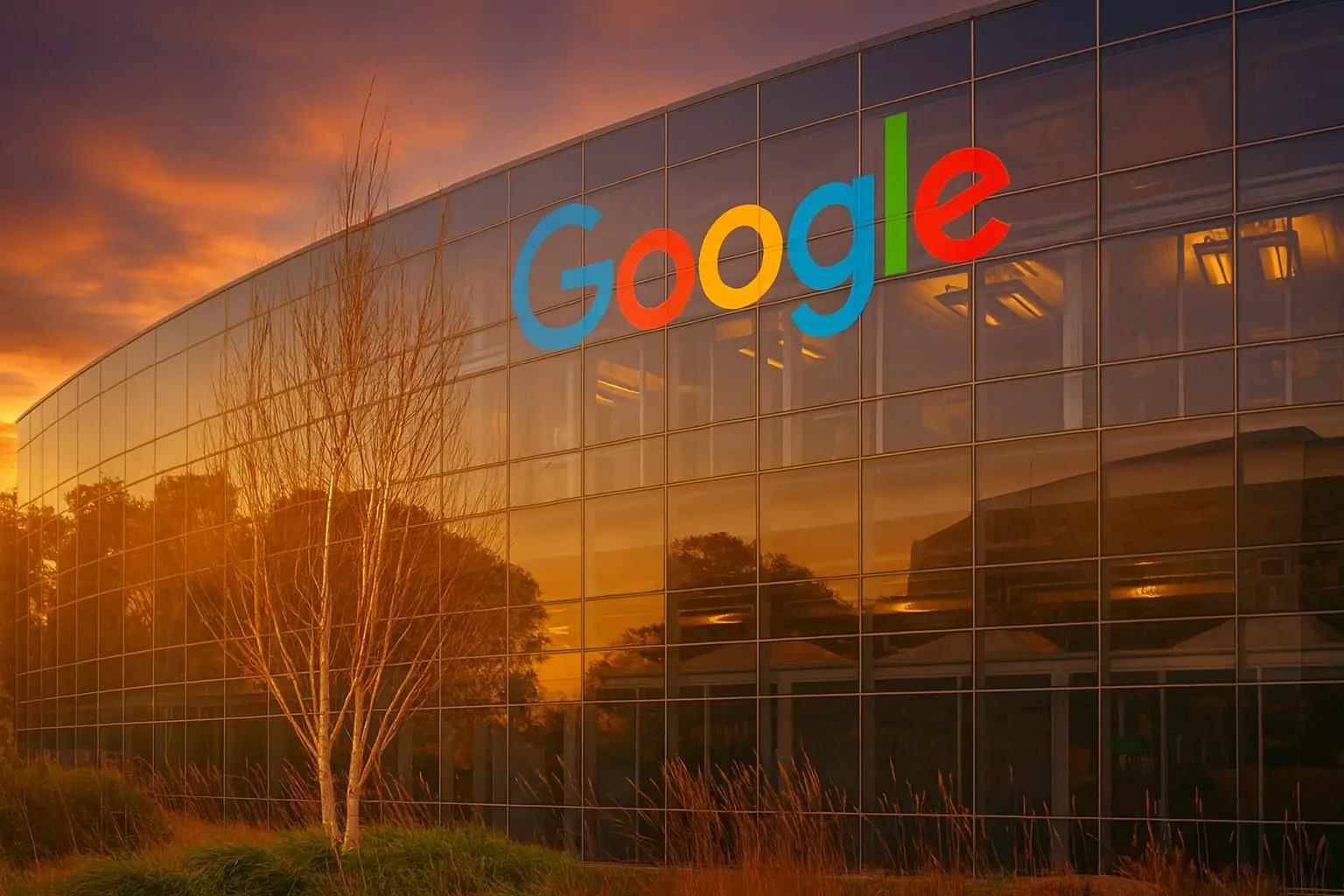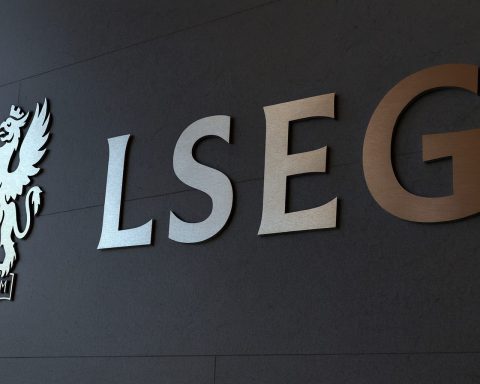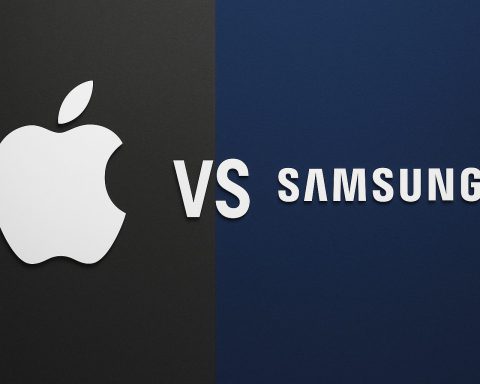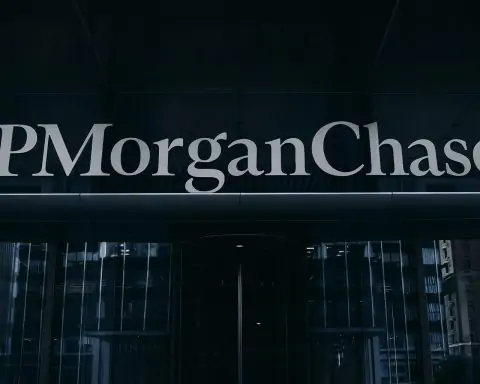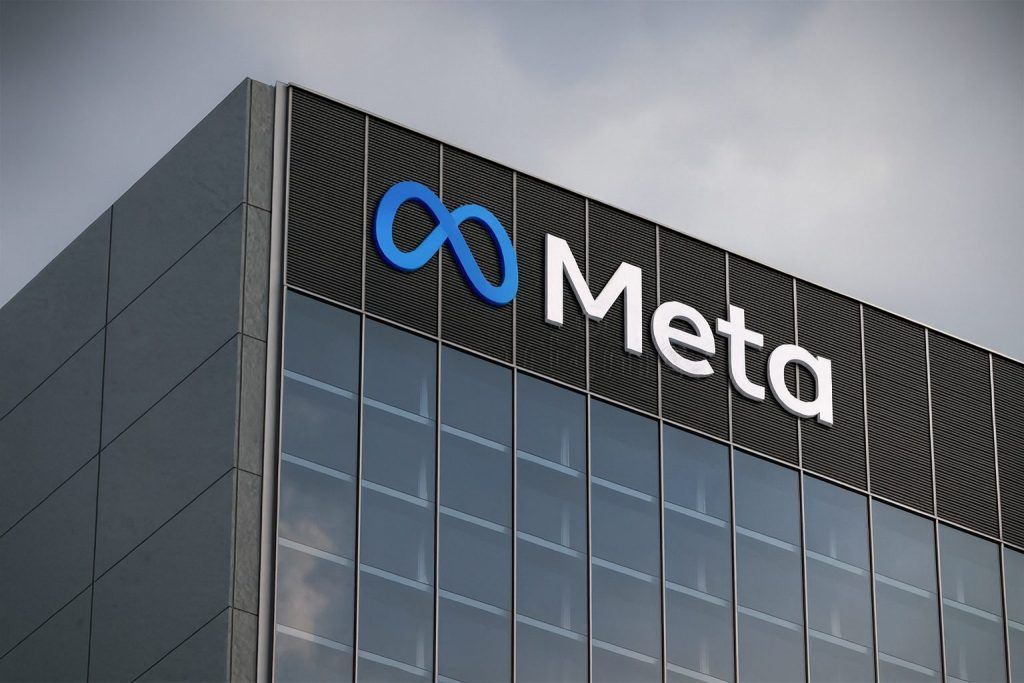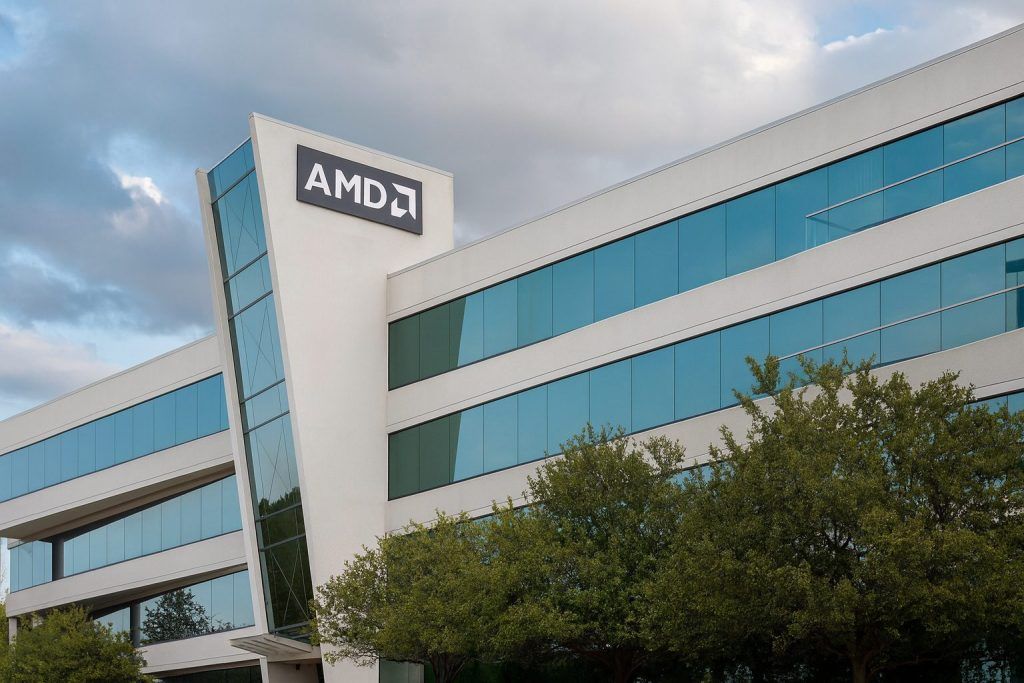Alphabet (GOOG) Stock: What to Know Before Friday’s Shortened Session on November 28, 2025
Alphabet Inc.’s Class C shares (NASDAQ: GOOG) head into Black Friday trading hovering near record highs, powered by an AI-led rally, a rare tech bet from Warren Buffett’s Berkshire Hathaway, and a wave of optimism about Google’s home‑grown AI chips. At the same time, the stock still faces real regulatory and valuation risks that traders should understand before the bell.
Below is a concise pre‑market briefing on Alphabet (GOOG) stock before markets open on Friday, November 28, 2025.
1. Where Alphabet Class C Stock Stands Heading Into Friday
- Last regular close: GOOG finished Wednesday, November 26, at $320.28, down about 1.0% on the day, on roughly 29.8 million shares of volume. [1]
- Recent high: Over the past week the stock has traded as high as roughly $328–329, putting it just below its 52‑week high and well above its 52‑week low around $140–143. [2]
- After‑hours reference: In extended trading on November 26, GOOG ticked modestly higher to about $320.9, suggesting a steady tone heading into the Thanksgiving break. [3]
- Market cap and run‑up: Alphabet’s equity is now valued around $3.8–3.9 trillion, and the stock is up roughly 70% year‑to‑date, outpacing most of the “Magnificent Seven” peers. [4]
Remember: U.S. markets were closed on Thursday, November 27 for Thanksgiving, and will shut early at 1 p.m. ET on Friday, November 28. That shortened session typically brings lighter volume and potentially more volatile intraday moves. [5]
2. AI Momentum: Gemini 3 and Google’s Chip Ambitions
Alphabet’s latest leg higher has been driven by a growing belief that Google is no longer playing AI catch‑up — it’s pulling ahead in key areas.
Gemini 3: “Sleeping giant” wakes up
Google’s Gemini 3 model is being widely described as its most capable AI system yet, with strong performance in reasoning, coding and complex prompts. Recent coverage notes: [6]
- Gemini 3 has drawn praise from enterprise users and analysts for handling intricate, multi‑step queries.
- It’s tightly integrated across Google products, from Search and YouTube to Workspace and Android, rather than being “just a chatbot.”
- Commentary in tech media frames Google as the “sleeping giant” of AI that is now fully awake, with Gemini 3 helping shift sentiment from “Google is behind” to “Google may be the most vertically integrated AI player.” [7]
On the Q3 earnings call, CEO Sundar Pichai highlighted that Google’s in‑house models now process billions of tokens per minute, the Gemini app has hundreds of millions of monthly users, and revenue from products built on generative AI models is growing at well over triple‑digit rates year over year. [8]
TPUs and the “race to 1 million chips”
Another major driver of the rally is the idea that Google isn’t just an AI software leader — it’s becoming a serious AI hardware contender:
- Google’s Tensor Processing Units (TPUs), once used mostly inside its own data centers, are now being positioned as an alternative to Nvidia’s GPUs for AI workloads.
- A widely cited Morgan Stanley note estimates Alphabet could sell 500,000 to 1,000,000 TPUs per year by 2027, with each 500,000 units potentially boosting Google Cloud revenue by ~11% and Alphabet’s EPS by ~3%. [9]
- Meta Platforms is reportedly in talks to spend billions of dollars on Google’s TPUs for its data centers and may start renting Google’s chips via Google Cloud as early as next year — a dramatic vote of confidence in Google’s silicon roadmap and a direct challenge to Nvidia’s dominance. [10]
Analysts increasingly describe Alphabet as an “end‑to‑end AI stack”: proprietary models (Gemini), proprietary chips (TPUs), the cloud platform to deploy them, and the consumer apps to monetize the outputs.
3. Q3 2025: Alphabet’s First‑Ever $100 Billion Quarter
Alphabet’s fundamental backdrop heading into Friday’s session is unusually strong.
From its official Q3 2025 earnings release: [11]
- Revenue:
- Total Q3 revenue: $102.3 billion, up 16% year over year (15% in constant currency).
- Google Services revenue (Search, YouTube, subscriptions, devices): $87.1 billion, up 14%.
- Google Cloud revenue: $15.2 billion, up 34%, with strength across core cloud and AI infrastructure.
- Profitability:
- Operating income: $31.2 billion, up 9%.
- Operating margin: 30.5% GAAP, or 33.9% excluding a large European Commission (EC) antitrust fine booked in the quarter.
- Bottom line:
- Net income: $35.0 billion.
- Diluted EPS: $2.87, up about 35% versus the prior year.
Pichai underscored that Alphabet has effectively doubled quarterly revenue over five years and is “firmly in the generative AI era,” with AI now driving measurable business results across Search, Cloud, YouTube, and subscriptions. [12]
4. Cloud, Subscriptions and the Wiz Security Bet
Beyond Search and ads, investors heading into Friday’s session should note how Alphabet is shoring up its recurring and enterprise businesses:
- Cloud backlog & AI usage: Google Cloud’s backlog has surged to around $155 billion, reflecting multi‑year AI and infrastructure commitments. [13]
- Paid subscriptions: Alphabet has crossed roughly 300 million paid subscriptions, led by Google One and YouTube Premium, helping smooth revenue and diversify away from pure ad spending cycles. [14]
Wiz: A $32B swing at cloud security
A particularly important development for Cloud investors:
- The U.S. Department of Justice has completed its antitrust review without objections on Alphabet’s planned $32 billion acquisition of cloud security startup Wiz. [15]
- The deal is Alphabet’s largest acquisition ever and is expected to significantly bolster Google Cloud’s security portfolio — a key differentiator in enterprise AI deployments, where security and compliance are mission‑critical. [16]
Security analysts quoted around the deal frame it as a major validation of cloud‑native security and a sign that Google intends to be a top‑tier security vendor, not just a general cloud provider.
5. Big‑Money Flows: Berkshire Hathaway, Cathie Wood and Others
Berkshire’s rare tech move
One of the clearest sentiment signals for Alphabet in recent weeks has been the arrival of Berkshire Hathaway on the shareholder register:
- Berkshire disclosed a stake of roughly 17.8 million Alphabet shares, worth about $4.9–5.7 billion depending on the reference date, in its Q3 2025 13F filings. [17]
- Reuters and other outlets noted that Alphabet shares jumped more than 5% on the news, marking one of Berkshire’s most prominent tech bets and a significant reversal from its long‑standing regret about “missing” Google earlier in the 2000s. [18]
Given that Berkshire has simultaneously trimmed some Apple exposure, the move is widely seen as an expression of long‑term confidence in Alphabet’s AI and cloud trajectory.
Cathie Wood adds on strength, some funds trim
On the more active‑trading side of the spectrum:
- Cathie Wood’s ARK Invest purchased about 174,293 Alphabet shares across its ETFs on Tuesday, even as the stock pushed toward a $4 trillion valuation, underscoring high‑conviction interest from growth‑focused funds. [19]
- Meanwhile, filings show Codex Capital Asset Management trimmed its Alphabet position by 3.2% in Q2, selling around 1,250 shares to end the period with 38,000 shares, still its 12th‑largest holding. [20]
Net‑net, institutional data still suggest broad support, but Friday’s lighter‑volume session could amplify any short‑term profit taking after this year’s outsized gains.
6. Regulatory and Legal Overhangs You Can’t Ignore
Despite the market’s enthusiasm, Alphabet remains under heavy global scrutiny, and those risks are central to any near‑term trading thesis.
EU antitrust fines and adtech
- In September, the European Commission fined Google €2.95 billion (~$3.5 billion) for anticompetitive behaviour in its adtech business, ordering the company to stop favoring its own ad‑tech services and to propose measures to address conflicts of interest across the ad supply chain. [21]
- Alphabet booked an EC fine of about $3.5 billion in Q3, which weighed on GAAP operating margins but is excluded from some non‑GAAP metrics the company highlights. [22]
U.S. search monopoly case: harsh words, limited remedies
- The U.S. Department of Justice and several states won a landmark antitrust case last year, with the court finding that Google illegally maintained a monopoly in search. [23]
- However, the remedies announced in September 2025 stopped short of breaking up the company, opting instead for behavioural changes and oversight — a relatively mild outcome that helped fuel Alphabet’s valuation rebound. [24]
Ad tech case remedies still pending
- A separate U.S. ad‑tech antitrust case has already produced a ruling that Google holds two illegal monopolies in digital advertising; the court is now deciding what structural or behavioural remedies to impose. [25]
- At recent hearings, Judge Leonie Brinkema signaled reluctance to order a full breakup of Google’s ad business, citing enforceability concerns and the potential for years of appeals. She appeared more open to robust behavioural remedies instead. [26]
Privacy litigation and possible profit disgorgement
- In a separate U.S. privacy case, plaintiffs are seeking over $2.3 billion in profits and limits on Google’s ability to collect advertising‑related data from users who opt out of tracking. Google argues that such measures are disproportionate and would cripple tools relied on by developers. [27]
Takeaway for Friday: None of these cases are likely to be resolved during Friday’s short session, but any surprise headline — particularly around ad‑tech remedies or fresh EU enforcement — could hit the stock quickly in a thin market.
7. Valuation Check: Is GOOG Overheating?
With the stock near all‑time highs and flirting with a $4 trillion valuation, valuation is front‑of‑mind for traders.
Based on latest aggregated data (mostly on the closely linked GOOGL share class): [28]
- Market cap: ≈ $3.86 trillion
- TTM revenue: ≈ $385 billion
- TTM net income: ≈ $124 billion
- Trailing P/E: ~31–32x
- Forward P/E (next 12 months): ~30x
- Dividend yield: ~0.25–0.30%
On the analyst side:
- Around 40+ analysts rate Alphabet stock a “Buy”, with an average 12‑month target near $297, which is actually a few percent below the current price — a sign that the street recognizes how far and fast the stock has run. [29]
- At the same time, individual targets stretch from about $190 on the low end to $350 on the high end, and several firms (including HSBC and Wolfe Research) have recently raised targets into the $335–$350 range after Q3 results and AI updates. [30]
Recent Barron’s and other long‑form analyses point out that even after this rally, Alphabet still trades at one of the lowest P/E multiples among the Magnificent Seven, given its growth, margins, and AI positioning — a key part of the bull case. [31]
8. Key Short‑Term Catalysts to Watch in Friday’s Session
With fundamentals, AI narrative and big‑money buying all in focus, here’s what could move Alphabet (GOOG) before and just after the open on November 28:
- Pre‑market sentiment vs. the “AI bubble” debate
- Recent commentary from MarketWatch, CNBC and others frames Alphabet as a central player in a looming AI hardware and cloud battle with Nvidia, while also noting rising concerns about overheated AI valuations. [32]
- Any overnight shift in risk appetite for AI names (for example, from macro headlines or chip‑sector news) could be magnified during Friday’s low‑liquidity session.
- Headlines around TPUs and Meta
- Traders will watch for any confirmation, clarification, or denial from Meta or Google regarding the reported TPU deal. Even a brief comment could sway expectations about Google’s chip revenue opportunity. [33]
- Follow‑through on Berkshire and institutional flows
- Further commentary from Warren Buffett, Berkshire, or major active managers could influence whether recent buying is seen as the start of a longer accumulation phase or a one‑off rotation. [34]
- Regulatory chatter
- New leaks or analysis around the forthcoming ad‑tech remedies ruling or continued EU enforcement could trigger quick re‑pricing of regulatory risk, especially now that a meaningful EC fine is a known line‑item in the P&L. [35]
- Technical and positioning factors
- GOOG is up more than 50%+ in the last three months and ~70% YTD, near a 52‑week high, making it vulnerable to profit‑taking or tactical short‑term pullbacks, particularly in a short session where options hedging and algorithmic trading can dominate flows. [36]
9. What This Means for Traders and Investors on November 28
Going into Friday’s open, the core story on Alphabet (GOOG) looks like this:
- Bullish drivers
- Breakout AI narrative built around Gemini 3, a rapidly adopted AI product suite, and home‑grown TPUs that may finally give the market a credible alternative to Nvidia’s GPUs. [37]
- Record financial performance, with Q3 revenue above $100 billion, robust earnings growth, and accelerating Cloud momentum despite heavy capex. [38]
- Validation from major investors like Berkshire Hathaway and ARK Invest, along with a broad base of institutional ownership. [39]
- Strategic expansion in cloud security (Wiz), media distribution (e.g., YouTube TV content deals), and enterprise AI that deepens competitive moats. [40]
- Bearish / cautionary factors
- A significant regulatory overhang in both the U.S. and EU, including a multibillion‑euro EU fine already paid and unresolved ad‑tech remedies that could still mandate meaningful changes. [41]
- Ongoing privacy litigation seeking large‑scale profit disgorgement and tighter limits on data collection, which could affect the economics of targeted advertising. [42]
- A valuation that, while not extreme by mega‑cap tech standards, now assumes sustained double‑digit growth in an environment where some investors worry about a broader AI bubble. [43]
For traders into Friday’s shortened U.S. session, the setup is classic high‑expectation, high‑beta mega‑cap tech:
- Any positive incremental news on chips, cloud wins or regulatory leniency could send GOOG testing or breaking recent highs in a thin tape.
- Conversely, even modestly negative headlines — a cautious analyst note, regulatory commentary, or broad AI risk‑off move — could trigger a sharper‑than‑usual pullback given how crowded the trade has become.
10. Bottom Line
Alphabet Inc. Class C stock enters Friday, November 28, 2025:
- Near record highs and a ~$3.8–3.9 trillion valuation,
- Fresh off its first‑ever $100 billion quarter,
- Backed by a Berkshire‑sized vote of confidence and broad AI enthusiasm,
- But still shadowed by antitrust and privacy battles that could reshape parts of its ad business in the years ahead.
Whether you’re day‑trading Friday’s shortened session or reassessing a longer‑term position, the key is balancing Alphabet’s powerful AI and cloud momentum against the regulatory and valuation risks that are now firmly part of the story.
This article is for informational purposes only and does not constitute investment advice. Always do your own research or consult a licensed financial advisor before making investment decisions.
References
1. www.investing.com, 2. stockanalysis.com, 3. www.barrons.com, 4. www.reuters.com, 5. m.economictimes.com, 6. techwireasia.com, 7. techwireasia.com, 8. blog.google, 9. stockanalysis.com, 10. www.reuters.com, 11. s206.q4cdn.com, 12. blog.google, 13. s206.q4cdn.com, 14. blog.google, 15. siliconangle.com, 16. siliconangle.com, 17. www.reuters.com, 18. www.reuters.com, 19. seekingalpha.com, 20. www.marketbeat.com, 21. ec.europa.eu, 22. s206.q4cdn.com, 23. www.justice.gov, 24. www.justice.gov, 25. www.reuters.com, 26. www.ft.com, 27. www.reuters.com, 28. stockanalysis.com, 29. stockanalysis.com, 30. www.marketbeat.com, 31. www.barrons.com, 32. stockanalysis.com, 33. www.reuters.com, 34. www.reuters.com, 35. www.justice.gov, 36. www.marketwatch.com, 37. techwireasia.com, 38. s206.q4cdn.com, 39. www.reuters.com, 40. siliconangle.com, 41. ec.europa.eu, 42. www.reuters.com, 43. www.barrons.com
